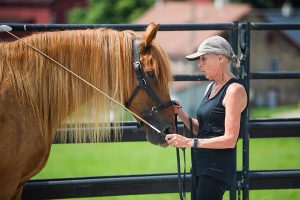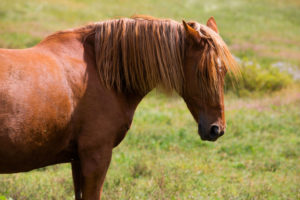We are a culture who loves quick fixes and easy solutions.
With all that competes for our attention, a promise of a problem solved is attractive.
Quick fixes do exist. Sometimes a change in equipment to a saddle that fits better, or an adjustment in posture that immediately makes us more stable solves our problem, or our horse’s problem right away.
But other quick fixes seem to provide a solution, and then make the problem worse…
The difference is if the “quick fix” is working on the cause of the problem or only addressing a symptom.
I will explain more in today’s video!














14 Responses
Thank you for doing this valuable weekly show. a quick fix always reminds me that it is like putting a bandage on a sore on a leg that is caused because the person has
un-diagnosed diabetes.
Thanks for the insight, Callie! It encourages us to be patient and keep working in order to find the best outcomes for our horses in the long term.
Absolutely true JoAnn!
-Julia, HorseClass Community Manager
My quick fix really was a quick fix. Opening my thighs and taking pressure off my horses shoulders allowed him to move forward freely giving a more willingness to walk out and trot without needing to keep urging him forward
Small shifts like that can make a huge difference! Callie was referring to things that are often offered as quick training fixes for the horse…those sometimes can make a problem worse.
-Julia, HorseClass Community Manager
I had a horse years ago that used to toss his head when anxious. So I decided to use a standing martingale to provide pressure when he tossed his head. Unfortunately I also caused a serious issue. We were out on a trail ride, calmly loping along a gassy path and my horse tripped on a gopher hole that I didn’t notice in the path. He tried to recover, but because I had a standing martingale on him, he couldn’t get his head down and out to recover and we both fell head over heels. Luckily neither of us were hurt, but it taught me a valuable lesson about so-called quick fixes and the harm they can do.
Great example of what Callie is referring to here Gaye, I’m glad neither of you were hurt!
-Julia, HorseClass Community Manager
Thank you Callie! You made this so clear and simple.
Thanks Laura!
-Julia, HorseClass Community Manager
Perfect timing! I have a sweet new gelding who has had a rough life. I have made some observations and I am delaying more work under saddle until I get a dental and TMJ check, chiro and a saddle refit. He had not great training in the past, and recently draw reins were used before I bought him, because he would not keep his head down. He can suddenly get quite jiggy, anxious and throw his head up. I am convinced he is in pain from somewhere.
Also came with a history of uncatchability. so I have my work cut out for me, gaining his trust and losing his fear of being ridden. He is otherwise very chill, and can be great under saddle, until he isn’t. This video makes me feel better about taking my time, and not being pushed into just forcing him to conform.
A quick fix usually only helps a rider at the moment. Not the horse. I used running reins on my big warm blood so that I felt safer. I thought I was keeping it loose, but I wasn’t and in doing so I over bent his head at the pole and caused a neurological issue in that area. The horse eventually had to be put down.
That is horrible. When you say running reins,
do you mean draw reins or side reins? I am not familiar with that term. Thank you
Thank you for sharing this amazing video. I don’t know before that these quick fixes can create problems.
Glad this video was helpful!
-Julia, HorseClass Community Manager